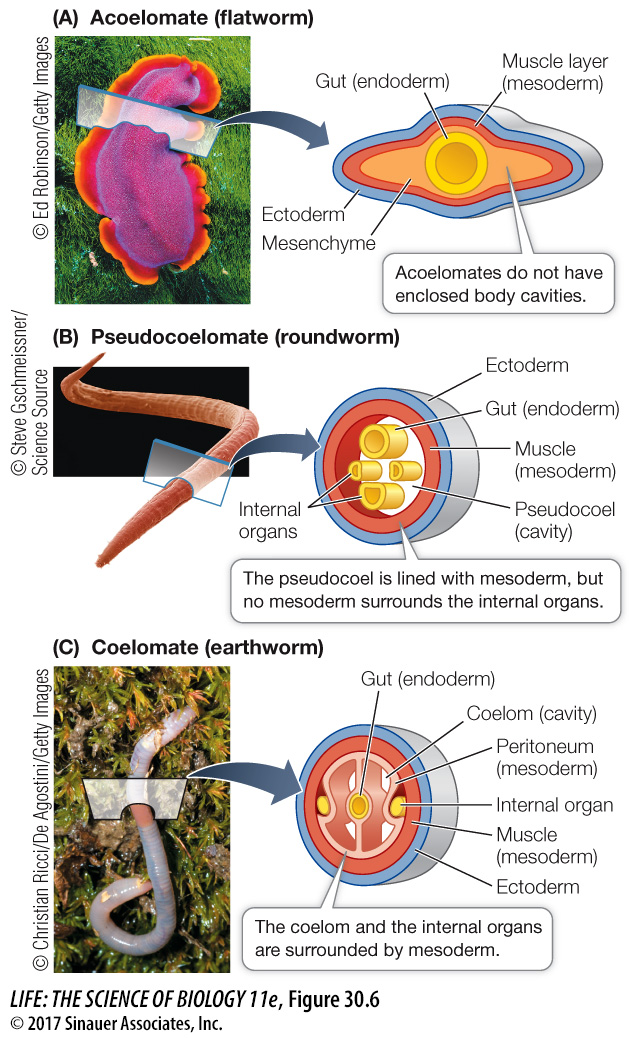The structure of the body cavity influences movement
The body plans of triploblastic animals can be divided into three types based on the presence and structure of an internal, fluid-
Acoelomate animals such as flatworms lack an enclosed, fluid-
filled body cavity. Instead, the space between the gut (derived from endoderm) and the muscular body wall (derived from mesoderm) is filled with masses of cells called mesenchyme (Figure 30.6A). These animals typically move by beating cilia. Pseudocoelomate animals have a body cavity called a pseudocoel, a fluid-
filled space lying between the mesoderm and endoderm. Many of the internal organs are suspended in the pseudocoel, which is enclosed by muscles (mesoderm) only on its outside; there is no inner layer of mesoderm surrounding the internal organs (Figure 30.6B). Coelomate animals have a body cavity, the coelom, that develops within the mesoderm. The coelom is lined with a thin layer of tissue called the peritoneum, which also surrounds the internal organs. The coelom is thus completely enclosed by mesoderm (Figure 30.6C).

Activity 30.1 Animal Body Cavities
The structure of an animal’s body cavity strongly influences the ways in which it can move. The body cavities of many animals function as hydrostatic skeletons. Fluids are relatively incompressible, so when the muscles surrounding a fluid-
In terrestrial environments, the hydrostatic function of fluid-